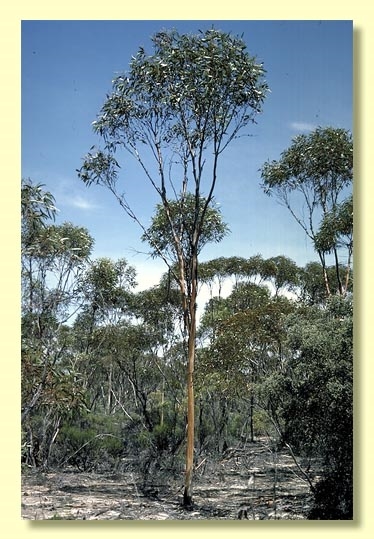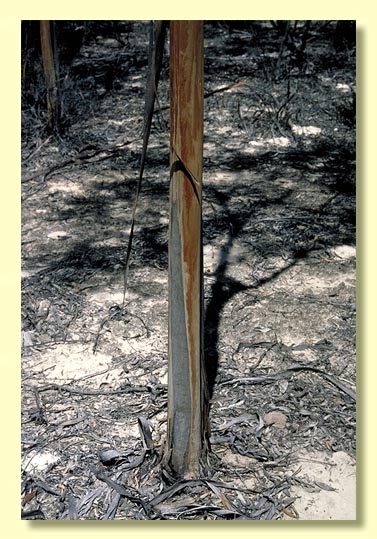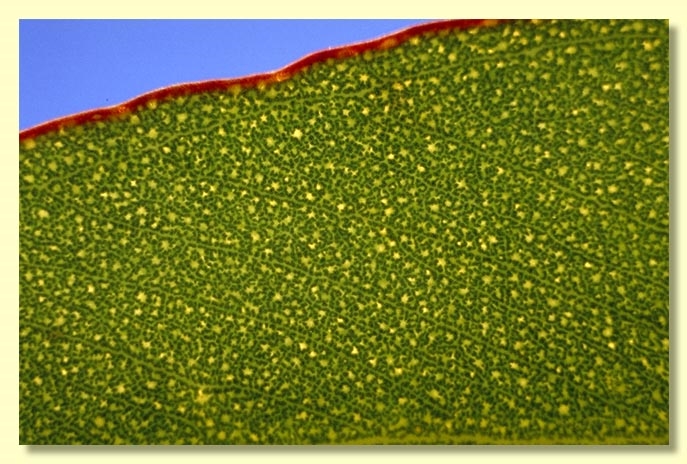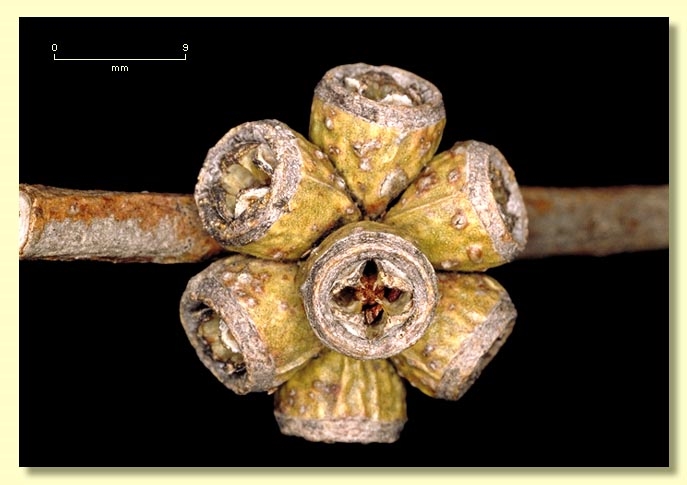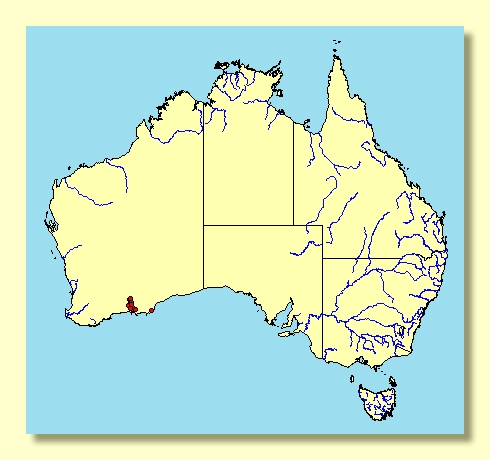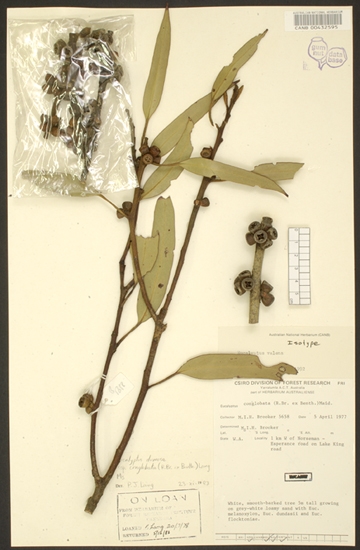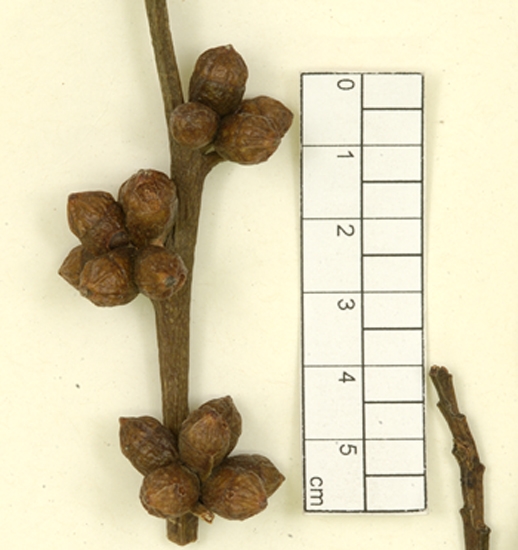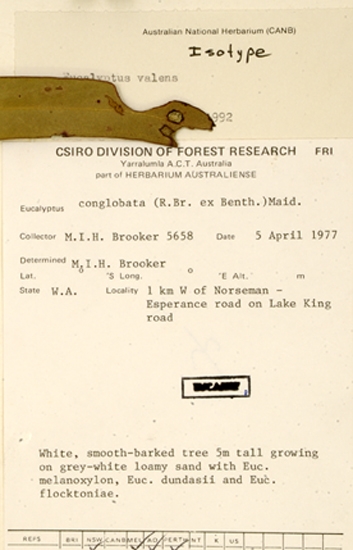Eucalyptus | Symphyomyrtus | Dumaria | Rufispermae
Euclid - Online edition
Eucalyptus valens
Bark smooth throughout, white or cream to pale grey and pinkish.
Branchlets have oil glands in the pith.
Juvenile growth (coppice or field seedlings to 50 cm): stems square in cross-section; leaves always petiolate, coarse, alternate, ovate becoming lanceolate up stem, 8–12 cm long, 5–11 cm wide, dull, bluish green at lower nodes becoming green up stem.
Adult leaves, alternate, petioles 1.8–3.3 cm long; blade lanceolate, 9–15.5 cm long, 1.5–3.5 cm wide, thickish, base tapering to petiole, margin entire, apex pointed, glossy, green, side-veins at an acute or wider angle to midrib, reticulation dense to very dense, intramarginal vein remote from margin, oil glands mostly intersectional.
Inflorescence axillary unbranched, peduncles stout, 0.2–0.5 cm long, buds 7, sessile to rarely shortly pedicellate, pedicels 0–0.2 cm long. Mature buds squat, shortly cylindrical to ovoid, ribbed at least on the operculum, (0.9–1.3 cm long, 0.6–0.8 cm wide), scar present, operculum conical or shortly beaked (0.4–0.6 cm long), at times wider than the hypanthium, stamens inflexed, cuboid to wedge shaped versatile anthers, sub-basifixed, dehiscing by longitudinal slits, style long and straight, stigma blunt, locules 4(5), the placentae each with 4 vertical rows of ovules. Flowers not seen.
Fruit sessile, cupular, 0.6–1.1 cm long, 0.8–1.1 cm wide, scarcely ribbed, disc descending usually obliquely, valves 4(5), at rim level.
Seeds reddish brown and glossy, 1.2–3 mm long, flattened-ovoid and slightly angular, dorsal surface lacunose or not, smooth or hardly reticulate, hilum ventral.
Cultivated seedlings (measured at node 10): cotyledons reniform; stems square to rounded in cross-section, slightly warty or smooth; leaves always petiolate, opposite for 3 or 4 nodes then alternate, ovate-lanceolate, 7–9 cm long, 2.5–4.5 cm wide, dull, green.
Flowering has been recorded in April.
A small to medium-sized tree (mallet) endemic to Western Australia, found only on the subcoastal plain from near Mount Ragged west to Scadden and Salmon Gums, on pale orange limy loams. The bark is smooth and the adult leaves coarse and glossy green, the juvenile leaves large, dull, blue-green (non-glaucous), and buds completely sessile.
In the classification of Brooker (2000) the more recently described Eucalyptus valens would belong in Eucalyptus subgenus Symphyomyrtus section Dumaria having these features: buds initially with two opercula the outer shed early, stamens strongly inflexed, ovules in 4 rows on the placentae and cotyledons reniform. Within section Dumaria the species belongs to a large sub-group of closely related species (series Rufispermae, 37 described species and subspecies) diagnosed by glandular pith in the branchlets, cuboid to wedge shaped versatile anthers, and by the reddish brown and glossy, flattish seeds which are unique to the series.
E. valens is most closely related to the coastal mallee species E. conglobata subsp. conglobata from which it differs only in its prominently erect mallet habit. It resembles another tree species with large buds and fruit, E. fraseri from the more arid Fraser Range-Balladonia area. E. fraseri has deltoid, slightly glaucous juvenile leaves and, usually, shortly and stoutly pedicellate buds with a slightly longer operculum compared with E. valens .

